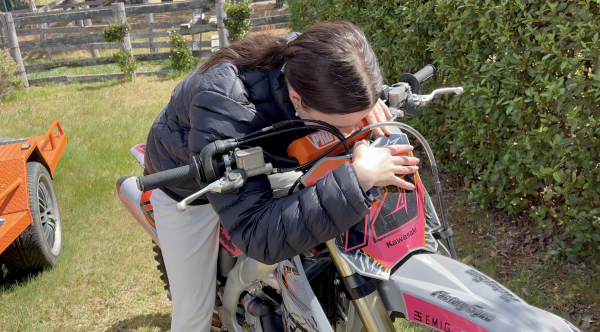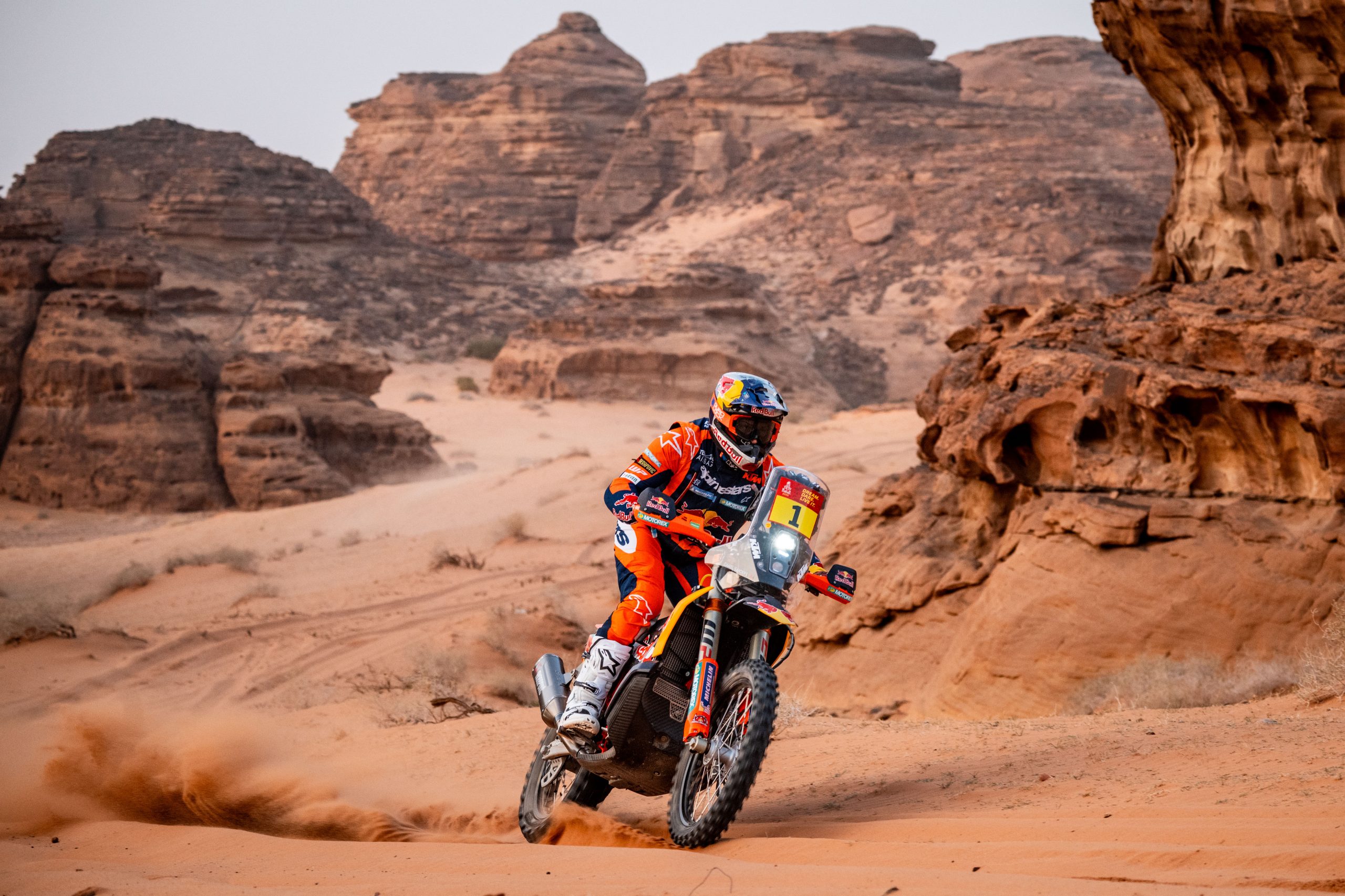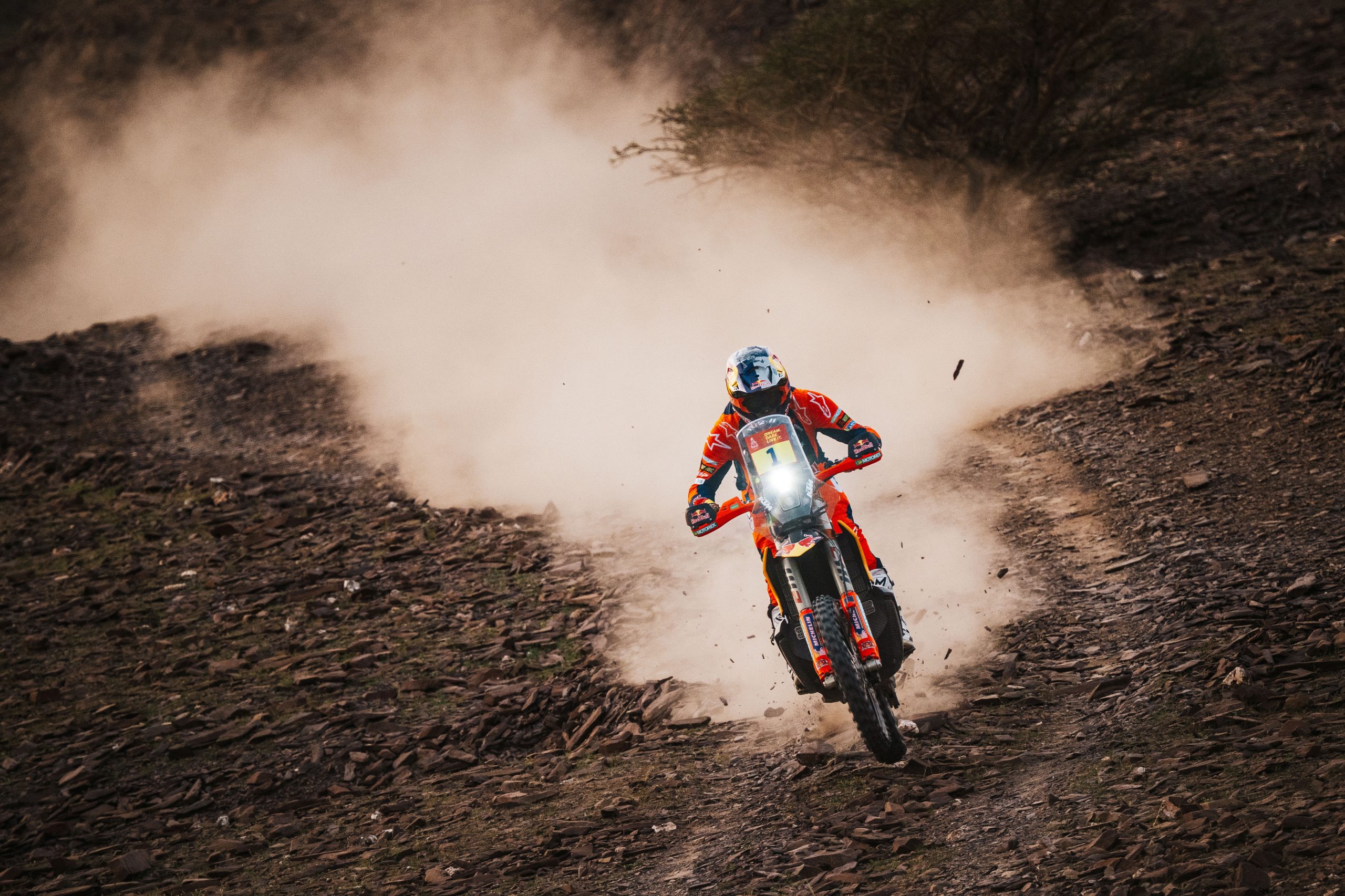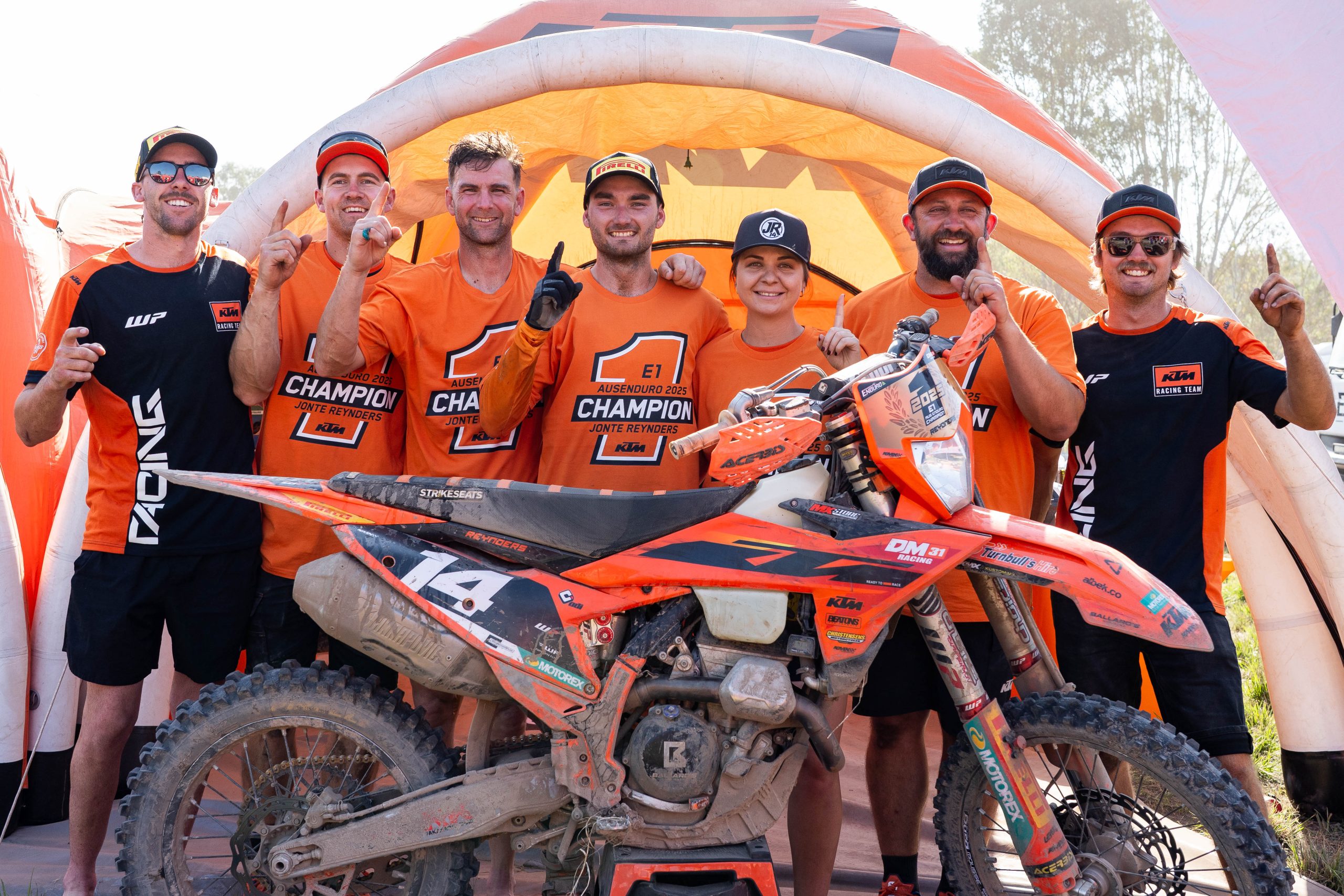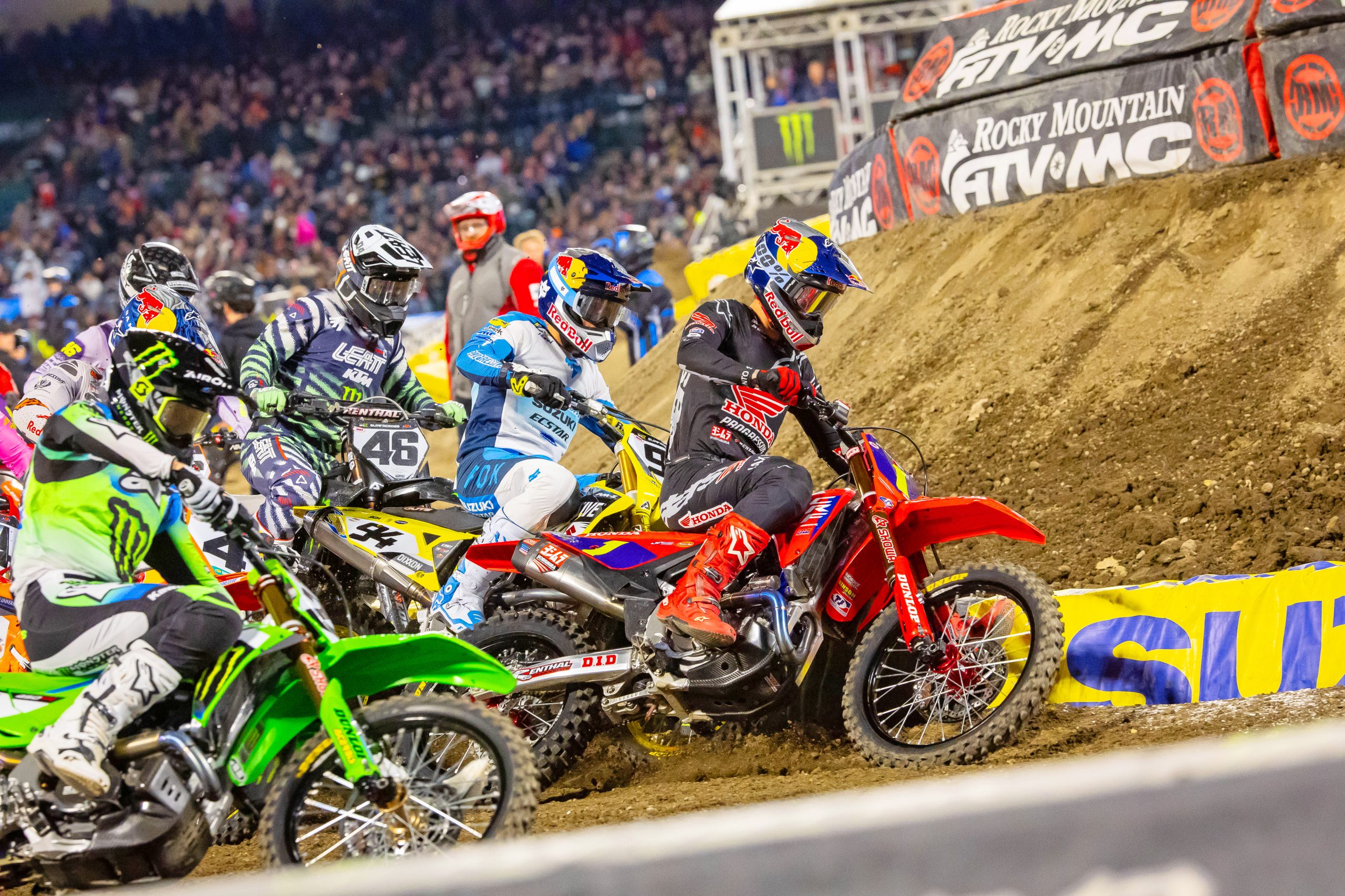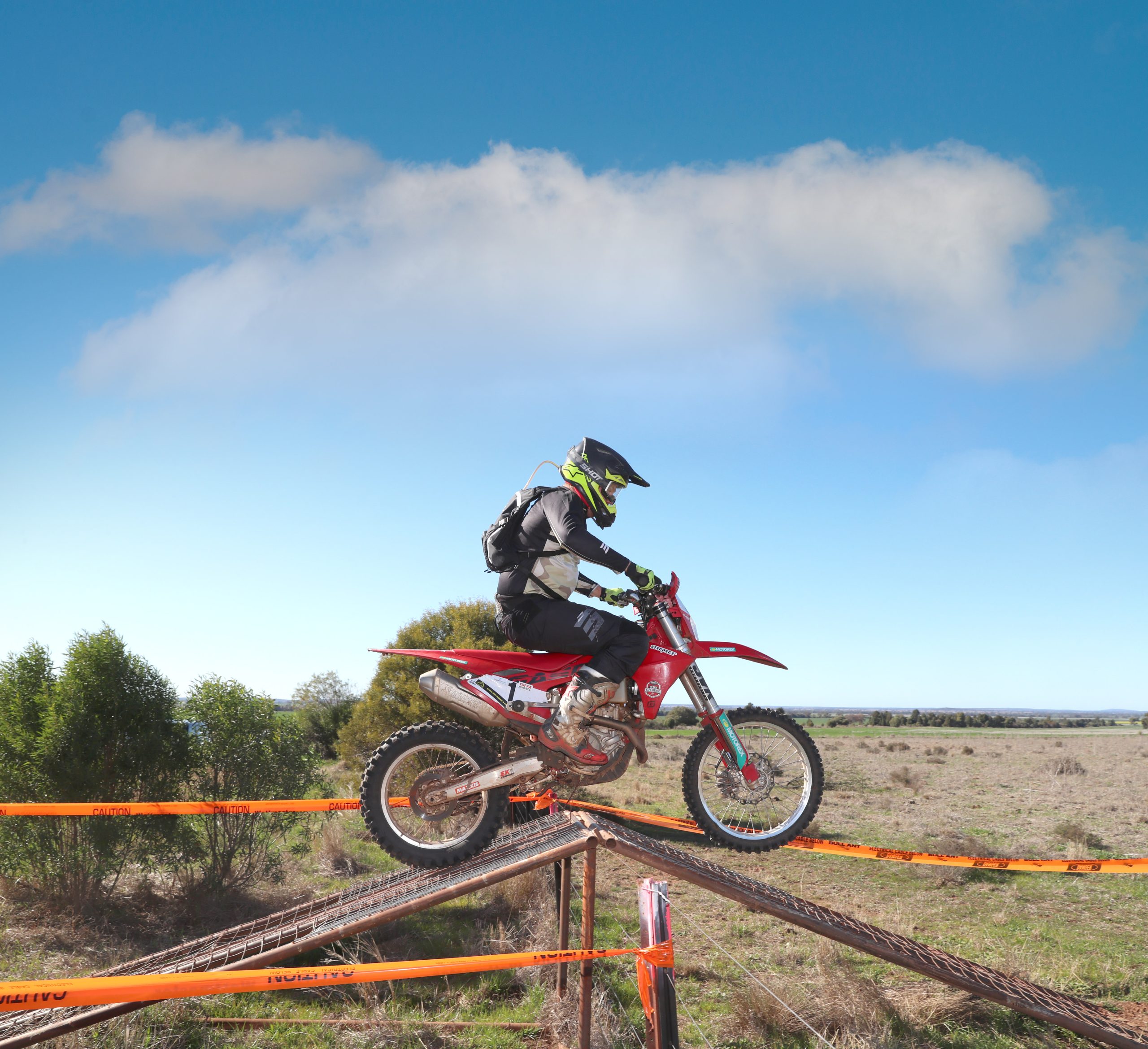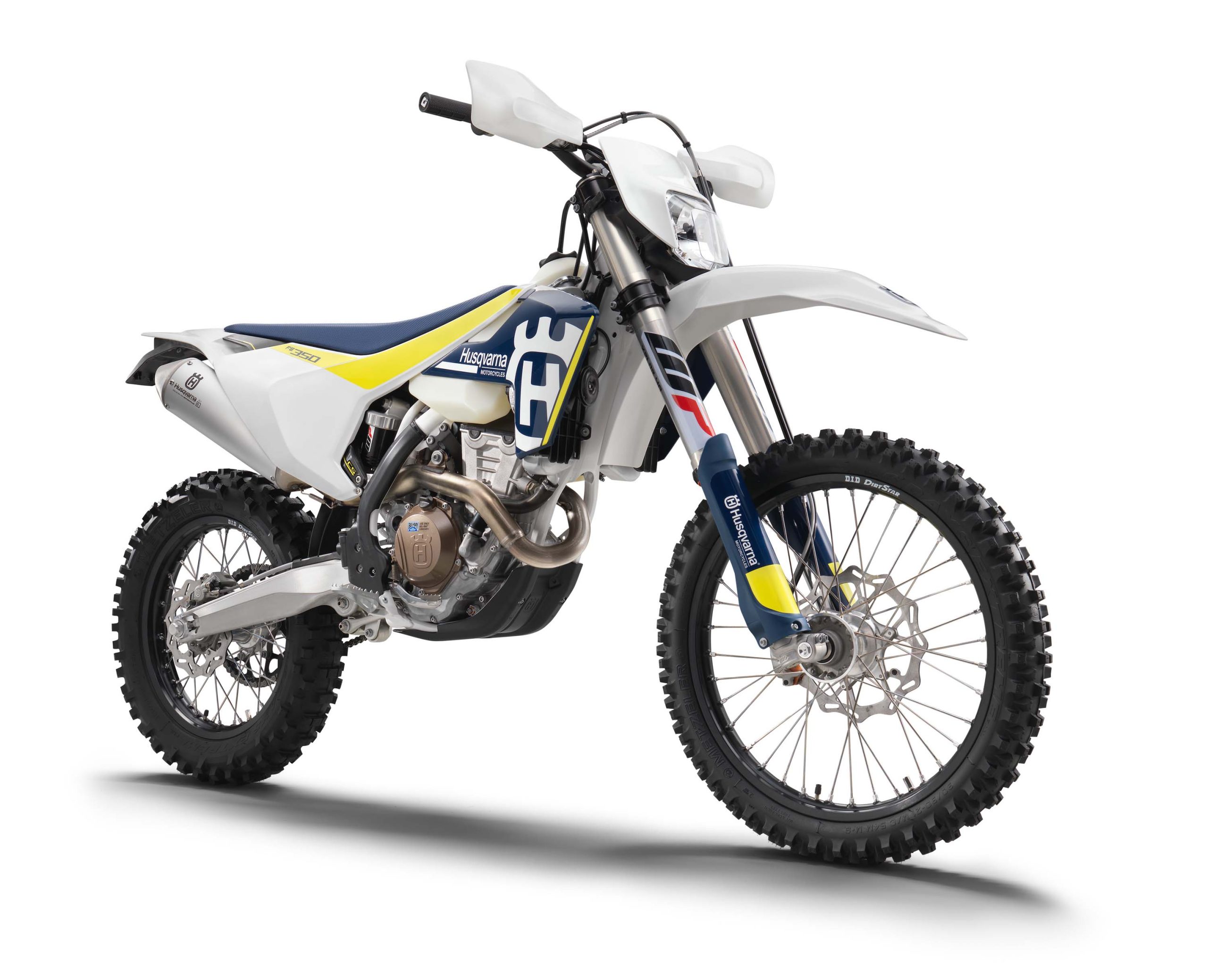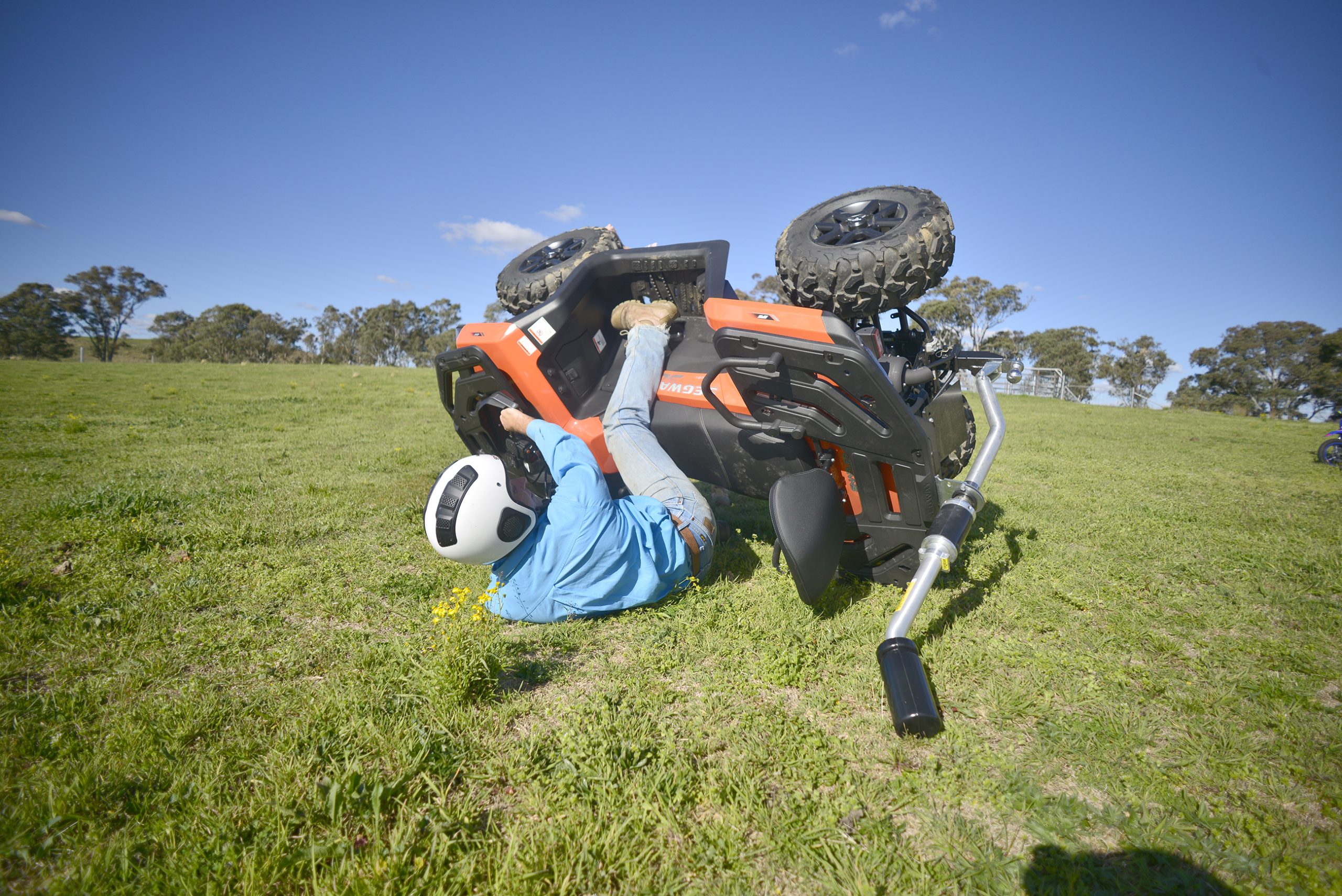Another serious injury this year got me thinking about how tough it is for average punters who don’t have an entire team supporting them to come back to our sport after injury. When you get hurt, it’s not just about the physical recovery, it’s about staying mentally strong and motivated… and somehow finding the courage to get back on the bike one day. There’s no physio team, no mental-health coaches, no one pushing you along. And honestly, it’s hard to stay positive. That’s why I wanted to chat with Grace Rowe.
In light of everything she’s been through over the past 12 months, I thought her story might help shed some light on how to overcome these setbacks. Grace has had her share of significant injuries in her riding career, and unlike the pro riders like Jett Lawrence, she doesn’t have an army of people around her to work on her mental and physical health. Yet, she keeps pushing through.

Where it all started
Grace’s story started like so many of ours, with a trip to a motorcycle shop with her dad. “I was seven years old, and as we drove past a Honda shop one Saturday morning on the way to the mall, Dad told me stories of his own childhood, how his dad would take him to see the bikes, so I said I wanted to go.”
Soon enough, Grace was sitting on a little Honda. “For the next few months, all I wanted was that CRF50.”
Grace admitted her mum didn’t think it would last very long. “Mum, agreed thinking I’d get bored after two rides and just keep going with ballet. But every Christmas from that year forward, there was a new bike under the tree.”
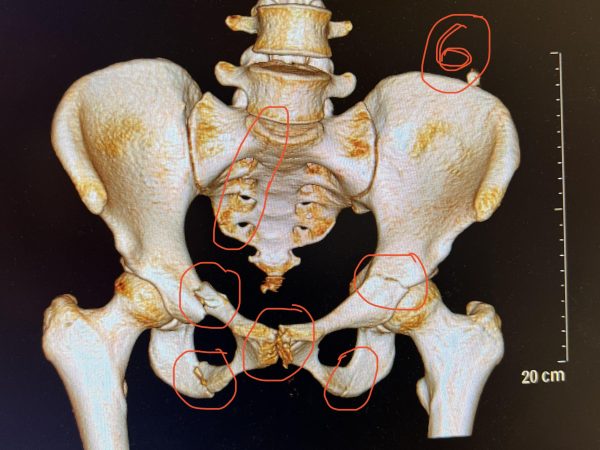
Grace then turned her interest to racing her dirtbike, and the passion grew stronger. “My first races were mini enduro and minikhana events. I loved working towards goals with Dad. In 2013 I won the State Title for Minikhana, after that I signed my first contract with Kawasaki Australia as part of the KX Junior Squad, and we decided we’d try Motocross.”
Like so many families getting into the sport where the parents weren’t ex-racers, the learning curve was steep for Grace and her dad. “Dad and I were working a lot of things out as we went. I remember my first State Title MX race in Dubbo. In scrutineering we realised I had the wrong number and background colours on my plastics. We searched through tool bags for some red and white electrical tape and in the motel room that night taped over my bike, I remember laughing with Dad but also feeling out of our depth.”
“But Dad told me to have fun, and believe in myself. We’d been training so much the previous 12 months. The next day I won my first state title round. After that we were keen to keep going, I started training with Greg Moss and Dan McCoy. We travelled a lot, it was a really fun time that also taught me a lot about hard work and commitment.”
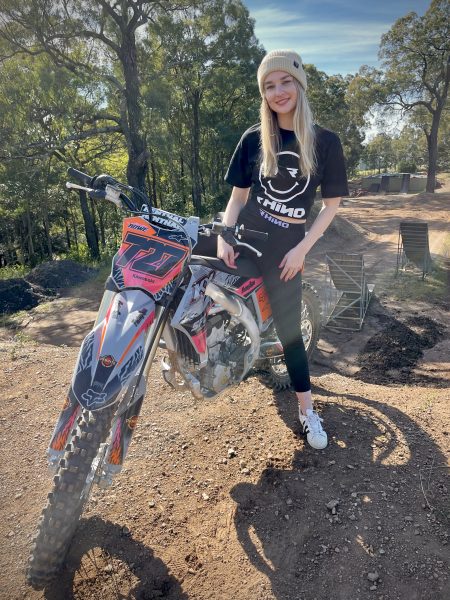
Grace’s natural ability on a dirtbike began to shine through, and she started to see great results. “All the hours of driving and training and pushing yourself to overcome fear, trying to go faster and jump further when your brain is telling you to do the opposite helped me to win multiple State Titles across Motocross and the NSW Sprint and X Country Enduro series. I loved riding and racing so much.”
“But when I turned 16 and completed my final year of junior racing, I had to make a decision. Did I want to continue pursuing motocross or prioritise my studies?”
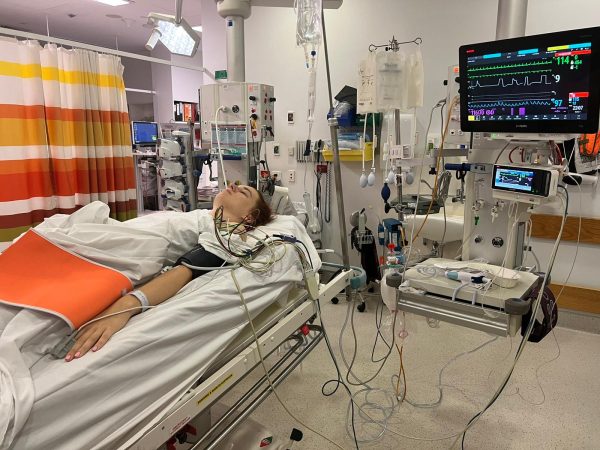
The devil on your shoulder
After much deliberation with her parents, Grace chose to focus on her studies and her Higher School Certificate. She put racing aside, determined to give her academic pursuits the attention they deserved. But then dirtbikes were thrust back into her life with an unexpected opportunity.
“After my first year at uni I was able to re-connect with Lance Russell, who I knew from my time with Kawasaki. He invited me out to their freestyle motocross ramps.
I was pretty nervous, when you look at those ramps for the first time they feel like a vertical wall.”

“But of course, I wanted to join in. It felt like so long since I’d felt like I had a place in the sport after my racing. Iremember hitting my first ramp and clearing just 10 feet, yet instantly loving it. I spent the next few years training every weekend I could, aiming to clear the pro 75-foot gap. I watched Lance [Russell] and Ryley [Davis] in awe, and after working hard I finally cleared that same gap myself.”
The transition from motocross to freestyle happened almost by accident. It wasn’t something Grace sought out but an opportunity that found her. “In freestyle, I found joy again. It didn’t have the same pressure that racing did, and to be honest I loved that pressure, but it was nice to ride purely for the fun of it. I loved the guys I was training with, and loved being back on my bike regularly.”
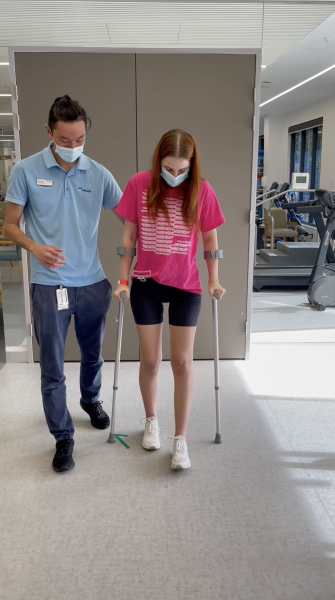
That fateful day
Grace had broken an arm at Nationals in 2014, broken two shoulders, some fingers, had a few concussions… but the most significant test of her resilience came with an accident in March last year. “Robbie Madison was over from the States, and the Freestyle Kings guys were heading out to train with Ryley and Lance. I got permission from work to take the day off and train. I was so excited and drove out with Dad and my little brother Kingston.”
“However, when we arrived, we found out the airbag had been punctured, so we decided to land to dirt and pushed the ramp in closer, from 75 feet to 55, to get used to the harsher landing again. I was nervous that day having all the guys there, and wanting to prove myself a little as well, as the only girl.”
“It was my first jump of the day, and the moment I left the ramp, I knew I’d gone long. My last memory was thinking, ‘This is going to really hurt.’
The impact of flat landing left Grace severely concussed and internally bleeding. When they airlifted her to the Royal North Shore Hospital, a full body CT scan revealed six unstable fractures in her pelvis. After a night in ICU, she had an emergency surgery the following morning to stabilise the pelvis and broken sacrum with three screws.
Grace endured the worst pain she’s ever experienced. She couldn’t move by herself, instead she had to have a team of nurses to transfer her by hoist or hover mat. She had to be rolled by three nurses multiple times each day and night.
After two weeks of this, one of Grace’s fractures had moved, and she needed a second surgery, leaving her with another four screws and a plate.
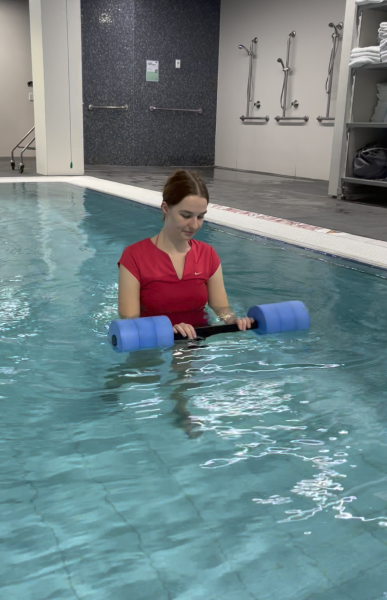
The night before her second surgery, she broke down in front of her parents, convinced she had nothing left to give. “My dad looked at me and said, ‘Grace, if your little brother Kingston needed this surgery, but you could take it for him, would you?’ Without hesitation, I replied that I’d do it twice if it meant he didn’t have to do it once. Dad said, ‘Then you know you’ve got what it takes to get through this’.”
For Grace the aftermath of the accident involved 31 nights in hospital, four weeks at home in a wheelchair, hospital for another two weeks to move to crutches, then six weeks on crutches, then physio and hydro twice a week for the next eight months, “The pain was relentless, and I often wondered if life would ever feel or look the same again. But I knew I had to keep going, even when I felt like giving up.”
The physical pain was one thing, but the mental trauma was another. Grace suffered from nightmares and flashbacks of that moment in the air, waking up crying in her hospital bed. “My psychiatrist helped me process the acute trauma reactions, and by understanding why my body was reacting the way it was, it honestly eventually made me feel so grateful for my body’s natural healing process.”
Like many of us who have been through a major injury, our once-great love often becomes something we hate. “In the first few days, my Mum had brought some photos to put up in my hospital room. We knew we were going to be there for a while, and she wanted it to feel nicer for me. I remember her asking me if she could put some riding pictures up, she wanted me to have the good memories of riding. But I just didn’t want to see any of it in that moment. I had so much regret and so much pain over what had happened. I wished so badly that I could take that one jump back. But eventually, I accepted that the sport wasn’t to blame – it was a mistake I’d made and unfortunately, being freestyle motocross, there was a really big price tag attached. I honestly laugh a little when I think about how quickly I changed… it was only a few weeks later that I was watching supercross races from my hospital bed, with moto pics up on my wall and Dad arriving with a new pair of limited edition Tech 10s we’d ordered before my accident. I’d loved this sport since I was seven-years old. That wasn’t going to change because of one accident.”

Road to recovery
The journey to recovery was long and arduous. Initially, Grace’s goals were as simple as sitting up or eating without nausea from the pain meds. “Every step forward – bending my knees, sitting up, getting on crutches, learning to walk again for the first time – felt monumental. Suddenly I was so grateful for the smallest things as I started regaining my ability to do them.”
Grace is certain she wants to keep riding dirtbikes but even now her goals in the sport are still evolving. “Honestly I’m not sure how I want to return to the sport. I’m still working that out, and I think about it everyday. But I also feel okay to give myself time to work it out.
“I have found that breaking down goals into manageable steps is crucial, and finding the strength to overcome the challenges, little or big, makes each small victory an incredible experience.
“In the end, time passed, my bones healed, and I made it through. I wish I could go back and reassure myself during those dark moments that things would be okay. Life has a way of pushing you to discover strengths you never knew you had, and sometimes, just letting time pass is all you can do, and all you need to do.”

You can do it!
If you’re going through something similar, here’s some of the things Grace says helped her:
- Maintain perspective
The moment you receive the news that you’ve been injured, and it’s not something you’re going to brush off, is really hard. In those moments. even though it can seem impossible, try to remind yourself that things are going to get better.
- Trust that you’ve got what it takes
It is normal in the moments that test us beyond our capacity to question if we can get through it, I had so many moments like that throughout this recovery. So many moments where I felt I had nothing left. But humans can be incredibly resilient, sometimes it will feel brave, other times it just feels like survival, but all of it gets you through.
- Break down your goals
When I first heard my diagnosis, it felt like a nightmare that wasn’t going to end. So instead of thinking long term I began thinking short term – I tried to stop worrying about what life would look like in a year from now, and just imagined getting through the day.
Ask yourself, “What’s one thing I can do today to keep my recovery on track?” For me, some days my goal was to sit up, but eventually as time passed, my goals became to stand up, and then to walk. Breaking things down means the end goal isn’t as overwhelming, and also allows you to recognise the progress you’re making and celebrate each win along the way.
- Let your friends and family take care of you
I felt a lot of guilt about my accident, because while I was paying the price for my mistake, I was watching my family be forced to do the same. I hated that because of me they were in hospital every night, stressed and scared. But I had to accept that I’d made a mistake, and that it just meant I was human. One of my favourite quotes is: “It is impossible to live without failing at something, unless you live so cautiously that you might as well not have lived at all – in which case, you fail by default.” If you’re not giving things a go in life, you’re not living.
What’s important is to learn from your mistakes, and try not to make them again (in my case, never, ever, under ANY circumstance, flat land again – lol). Don’t live in fear, but get okay with the idea that different seasons in life might look different.
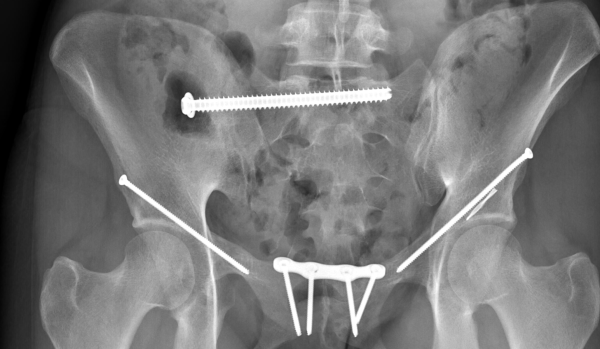
Blow-by-blow
Grace’s incident was nothing short of traumatic. Here’s how it unfolded in the minutes and days after:
“I was airlifted from the accident to Royal North Shore hospital. That night, I was put in ICU, and the next morning, I had my first surgery. Two weeks later I had to have a second unexpected surgery. I stayed in the hospital for a total of 31 nights. Those two surgeries left me with seven screws and a plate. I came home, still non-weight bearing for four weeks. There’s a staircase at the front of our house, so I was lifted in by the paramedics and then confined to my room and the kitchen, it started to feel a little claustrophobic by the end…
“I still couldn’t sit or stand by myself, every day Mum and Dad had to help lift me from my bed to my wheelchair and back. Then I went back to hospital where I stayed for two weeks. That’s when I moved from a wheelchair to crutches.
“I did day physio there for a few more months, and then continued doing physio privately for a few months after that. Finally, I had my third surgery on 14 March this year to remove the screws. That surgery was at North Shore again, almost exactly a year after my accident on 15 March, 2023. It’s crazy what can happen in a year.”
